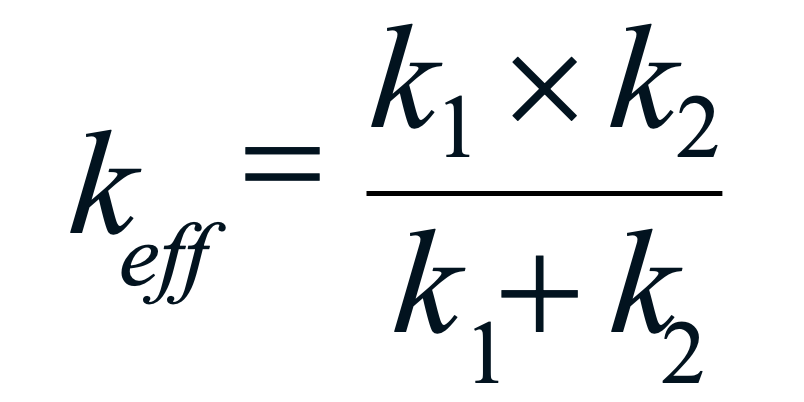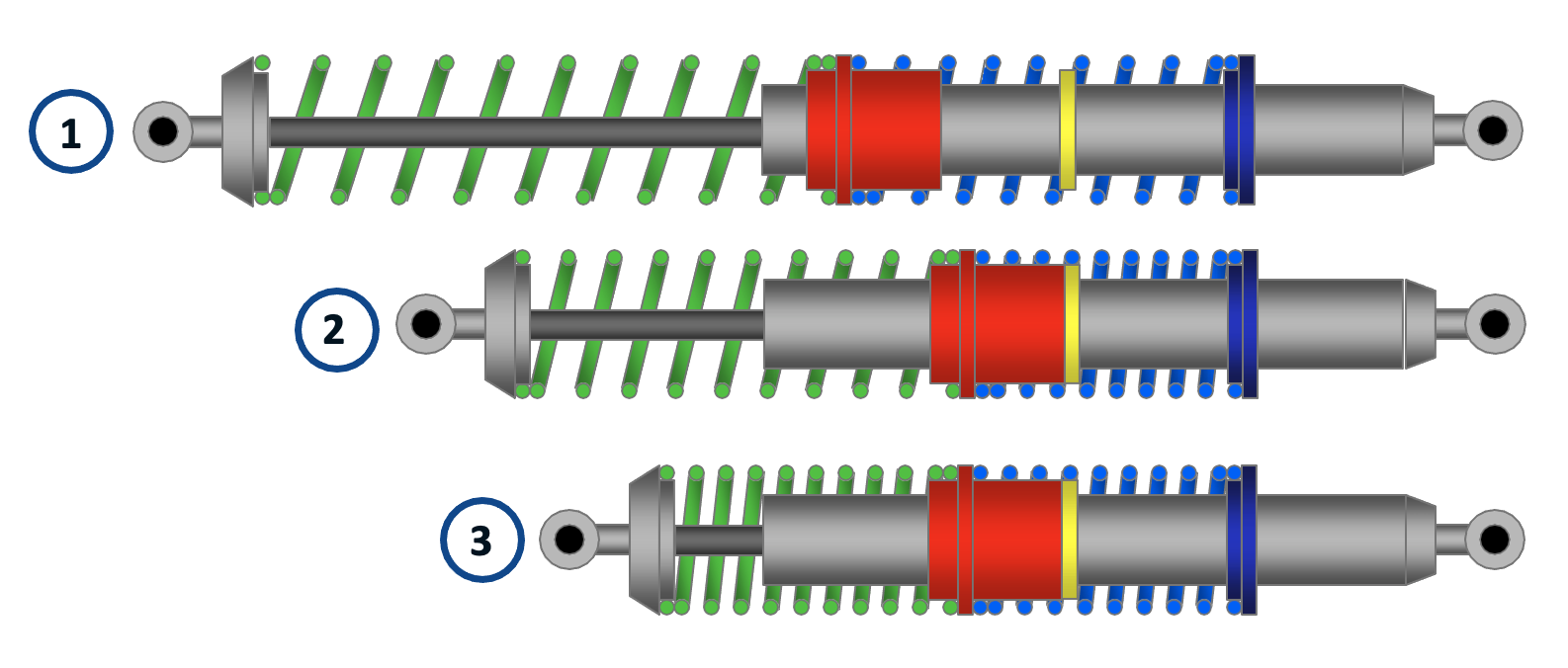Stacking Suspension Springs for a Dual Rate System
Dual Rate System Overview
Basically, this system works on the principle that two springs working in series share the overall applied deflection. That is a fancy way of saying that when you stack two springs, the combined spring rate drops. With our system, we can lock out one of the two springs during the shock's deflection. Once this happens, any additional deflection is only moving one spring, so the effective spring rate increases to the active spring's rate. Typical stacked spring on a Coilover setup by picking and choosing the two springs in the assembly, we can give you a fairly broad range of spring rates and rate combinations. The advantage of the adjustable locking ring is that it lets you select when in the shock's displacement you want the transition to take place. This gives you far more flexibility than dedicated progressive springs. The downside is that the spring stacks can get fairly long. But if you have room for the package, this gives you the chance to have a variable rate setup that you can tune using off-the-shelf springs. In other words, you get more flexibility at a lower cost.
Formulas for Springs in Series - Dual Spring Rate Calculator
- Takes advantage of stacking springs
- Adds adjustable lockout device
- Very flexible
- Progressive rate
- Digressive rate
- Digressive / progressive
- The green spring on the left is always active. The red component is a sliding coupler. Think of it as two-sided spring perch that is free to float along the shock body. The yellow component is an adjustable locking ring.

- Total deflection is shared by component springs
- Reduces the net spring rate
- The combined spring rate is lower than the lowest component spring rate

Both springs are active at the initial stages of shock deflection. This would be when the effective spring rate is lowest. As the shock is compressed, the load is transferred to both the green and blue springs. As they compress, the red coupler will slide to the right until it makes contact with the yellow locking ring. When that contact is made, any additional shock travel will not compress the blue spring any further. At that point, the effective spring rate increases to the green spring's rate.

It works just like the Digressive setup, but there is a second locking ring that limits the travel of the red coupler. When the coupler hits the second ring, the overall spring rate increases back up to the green spring's rate.

To download the PowerPoint version of this overview, click here.
Contact Us
For more information on Hyperco products, capabilities, or resources, contact us.